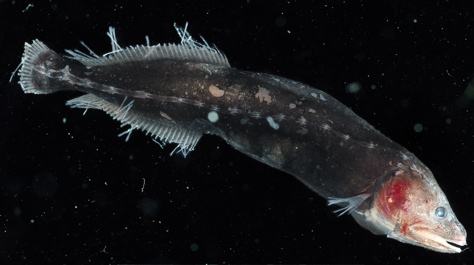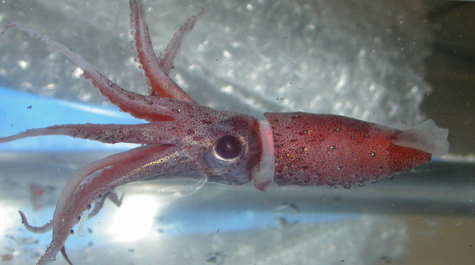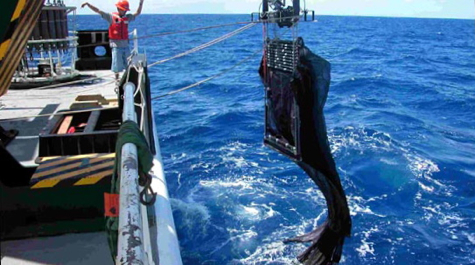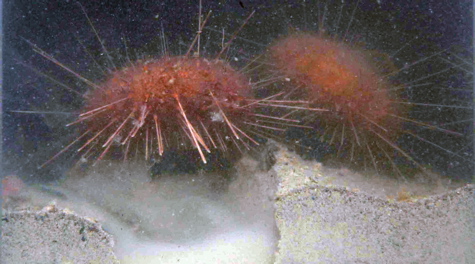VIMS researchers assist with global census
VIMS researchers can empathize with the challenges faced by census takers. But rather than unfriendly dogs or unwilling citizens, their trials involve the daunting task of trying to collect, identify, and catalog each and every ocean species—from tropical reefs to the deep sea.
The researchers—professors Bob Diaz, Tracey Sutton, Deborah Steinberg, and Mike Vecchione—are part of the Census of Marine Life (COML), a global, 10-year study of the diversity, distribution, and abundance of life in the oceans.
All told, the Census involves thousands of scientists representing more than 80 nations. By the time the Census concludes in October 2010, it will have collectively fielded more than 500 expeditions. Census scientists have so far discovered more than 5,300 new marine species.
The Census comprises 14 field projects designed to cover the major habitats and groups of species in the global ocean. Eleven field projects address habitats, such as seamounts or the Arctic Ocean. Three field projects look at long-distance migrators like tuna or globally distributed species such as microbes.
Diaz was part of a Census-affiliated international team that found hundreds of new marine species in the vast, dark deep-sea surrounding Antarctica. Carnivorous sponges, free-swimming worms, crustaceans, and molluscs living in the Weddell Sea provide new insights into the evolution of ocean life.
Vecchione, an adjunct faculty member at VIMS, investigated deep-sea squid and fish as part of MAR-ECO, a Census project to explore the poorly known ecosystems of the northern Mid-Atlantic Ridge and nearby seamounts. "Seamounts hold great promise for undiscovered biodiversity," says Vecchione. "The fauna of such steep, deep bottoms is practically unknown."
Steinberg studied the biodiversity of the tiny organisms at the base of the food chain, with a focus on zooplankton in the Sargasso Sea. Her efforts are part of a Census-related U.S. initiative to create an on-line database of marine animal and plant distributions called the Ocean Biogeographic Information System.
Sutton, who has sailed on several MAR-ECO expeditions to the deep waters of the North Atlantic, is working to better understand the dynamics of deep-sea food webs. "Our study will provide new information about ‘who's eating whom' in the deep sea, and the ecological forces that shape ocean communities," he says. His work has resolved a long-standing biological puzzle by showing that a group of deep-sea fishes previously classified into three separate families are actually the larvae, males, and females of a single family—the whalefishes.
Despite the diversity of their studies, the VIMS researchers agree on the value the Census brings. As Steinberg says "As the health of the world's oceans declines and species are lost, people are becomingly increasingly aware of how important it is to study and maintain biodiversity."





